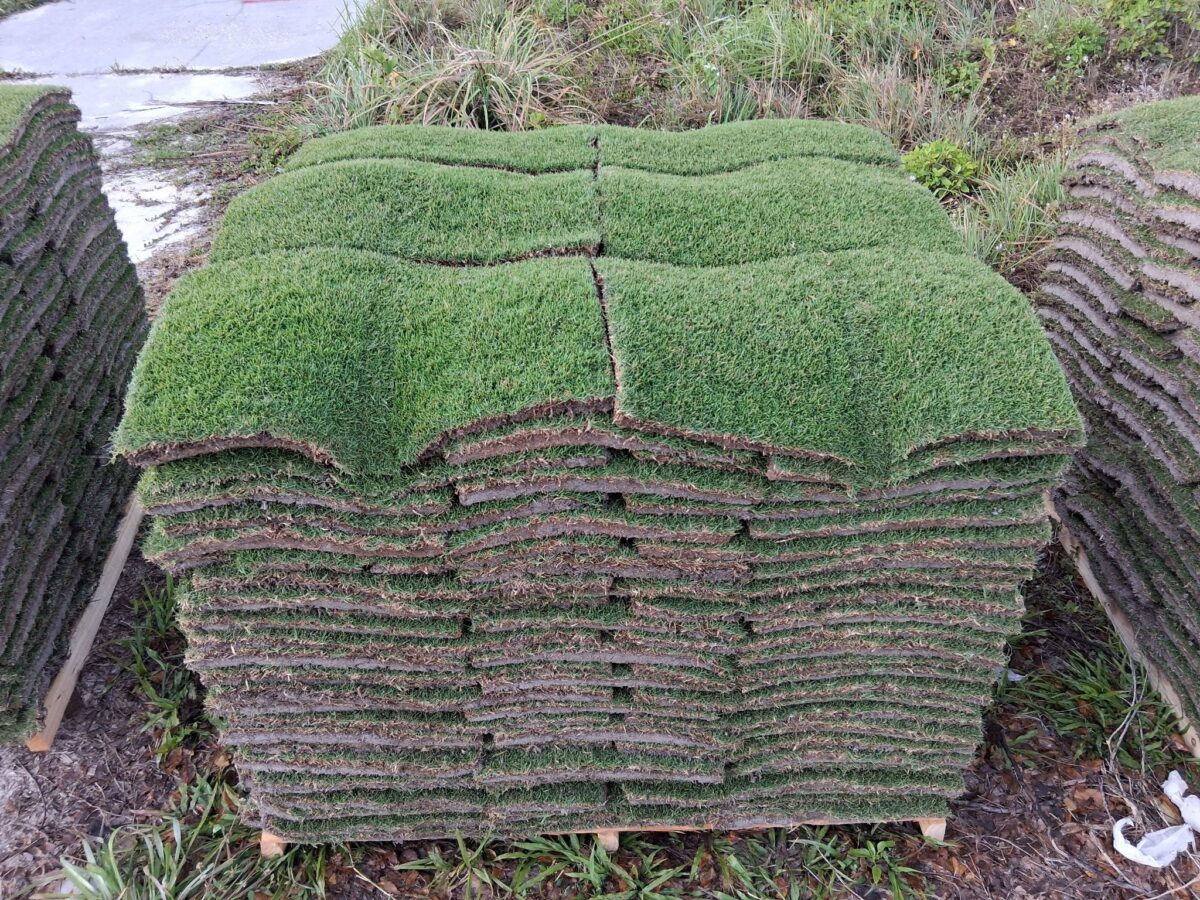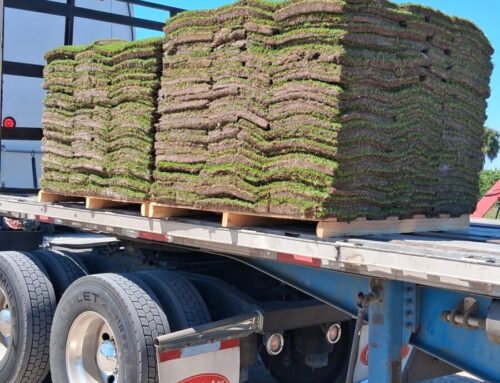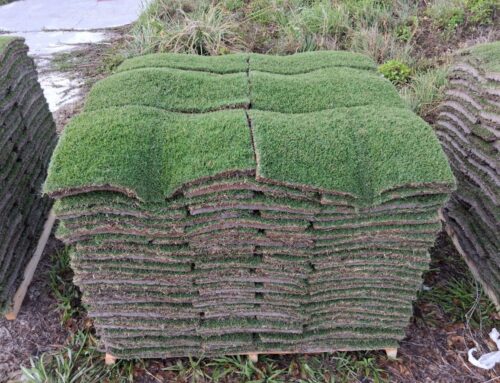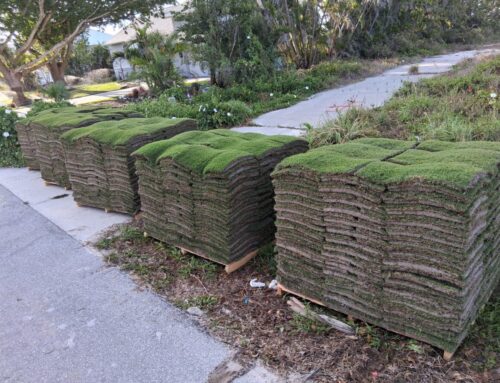Laying new sod is one of the fastest ways to upgrade your yard. A healthy, green lawn can enhance curb appeal, add value to your property, and provide your family with a space to enjoy outdoors. However, sod is a living product, and it doesn’t always succeed without proper preparation. Many Florida homeowners make simple mistakes during installation that prevent the grass from establishing a strong root system.
At Sunshine Sod, we specialize in sod delivery and installation throughout Florida, serving areas such as Tampa, Bradenton, Clearwater, Sarasota, and beyond. With years of experience, we’ve seen the most common pitfalls and know how to prevent them. Here are the top sod installation mistakes in Florida, along with tips on how to avoid them.
What Are the Most Common Sod Installation Mistakes?
1. Poor Soil Preparation
The biggest mistake we see is laying sod on top of compacted or unhealthy soil. Without preparation, sod roots can’t establish properly, leading to thin or patchy growth.
Why it happens: Many homeowners skip this step, thinking sod can be laid like carpet. But unlike carpet, sod needs to connect with the soil immediately.
How to avoid it:
- Remove existing grass, weeds, and debris.
- Till or aerate the soil so roots can penetrate.
- Add compost or nutrient-rich topsoil to sandy soils, which are common in Clearwater and coastal areas.
- Level the yard to prevent drainage issues.
Taking extra time on soil prep gives your sod a foundation to thrive.
2. Incorrect Watering
Installing new sod requires consistent moisture during its first few weeks. Too little water causes the sod to dry out and shrink at the seams, while too much creates soggy, disease-prone conditions.
Why it happens: Florida’s climate varies greatly. In hot areas like Fort Myers, evaporation is high, while rainy seasons in Sarasota can oversaturate new sod.
How to avoid it:
- Water immediately after installation.
- For the first week, water 2–3 times daily in summer.
- Gradually reduce frequency but increase depth after two weeks to encourage deep rooting.
- Use an irrigation system or sprinklers for consistent coverage.
Tip: Watering in the early morning is best. It reduces evaporation and allows grass to dry during the day, thereby lowering the risk of disease.
3. Choosing the Wrong Sod Variety
Not every sod type is suitable for every Florida yard. Sun exposure, soil type, and lawn use all play a role in selecting the right grass.
Why it happens: Many homeowners choose sod based on appearance alone, without considering growing conditions.
How to avoid it:
- Sunny yards: Celebration Bermuda or Empire Zoysia sod thrives in full sun.
- Shady areas: St. Augustine sod is one of the best options for partial shade.
- Low-maintenance lawns: Bahia is drought-tolerant and requires fewer inputs.
If you’re unsure, Sunshine Sod can recommend the best option for your area. For example, Tampa homeowners often choose Zoysia for its durability, while Sarasota residents may prefer St. Augustine for shade tolerance.
4. Gaps, Overlaps, and Uneven Installation
Sod must be installed tightly with no spaces or overlaps. Gaps dry out and create bare patches, while overlaps cause uneven growth.
Why it happens: Rushing installation or not staggering sod properly often leads to gaps or uneven seams.
How to avoid it:
- Lay sod in a brick-like pattern for strength and natural appearance.
- Place edges tightly together without overlapping.
- Use a roller to press sod firmly into the soil.
This step is especially important in high-traffic areas, such as Bradenton or Clearwater, where even seams ensure a durable and attractive lawn.
5. Ignoring Early Maintenance
Many homeowners believe sod is “done” once it’s installed. In reality, the sod maintenance in the first month is critical for long-term success.
Why it happens: New sod looks like a finished lawn, so it’s easy to forget it needs ongoing care.
How to avoid it:
- Wait until sod has rooted (about 2–3 weeks) before mowing.
- Fertilize as recommended for your sod type.
- Watch for weeds or insects, especially in humid areas like Sarasota.
Consistent maintenance ensures your sod transitions into a lasting, healthy lawn.
Quick FAQ: Sod Installation in Florida
Q: Can I lay sod on top of old grass?
A: No. Old grass and weeds must be removed so sod roots can contact the soil.
Q: How long does sod take to root in Florida?
A: Typically 2–3 weeks in spring or fall. Summer and winter installations may take longer due to stress or slower growth.
Q: What’s the easiest sod to maintain in Florida?
A: Bahia and Zoysia are popular options for drought resistance and low maintenance.
Q: Do I need an irrigation system for sod?
A: While not required, irrigation helps provide the consistent watering that sod needs, especially in hot climates.
Why Work with a Professional Sod Company?
DIY sod projects often cost more in the long run if mistakes happen. Professional installation ensures sod is laid correctly, watered properly, and cared for during its most vulnerable stage.
Sunshine Sod provides sod delivery and installation throughout Florida, helping homeowners avoid costly errors. From preparing the soil in Tampa to selecting the right grass for Sarasota, we guide you every step of the way.
Avoiding Sod Installation Mistakes in Florida
The most common sod installation mistakes, poor soil preparation, watering errors, choosing the wrong sod, uneven seams, and neglecting maintenance, are all preventable with the proper knowledge. By following best practices and working with an experienced sod company, you can enjoy a lush, green lawn that lasts.
Sunshine Sod delivers high-quality sod varieties and provides professional sod installation services across Florida, including Tampa, Bradenton, Clearwater, Sarasota, and Fort Myers.
Contact us today to schedule sod delivery or installation and give your lawn the strong start it deserves.







